Your baby turtle will add a small and (relatively) easy pet to your household. While no animal should be adopted without careful consideration, turtles can be fun, affectionate, and engaging with their human owners. Even though they don’t take as much daily commitment as a dog or cat, you’ll need to learn baby turtle care so he thrives in his new home.
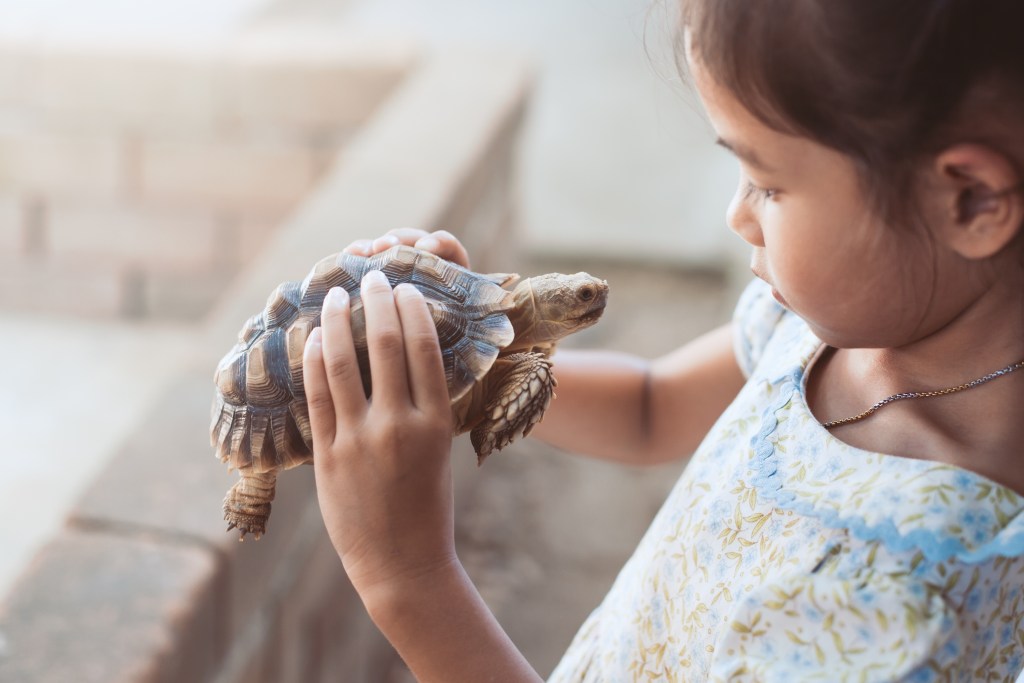
Can you keep baby turtles as pets?
Yes, but only if they're the proper size. It's illegal in America to buy a turtle with a shell less than four inches. This is because small turtles have been linked to salmonella outbreaks. You also want to go through a reputable breeder regardless of your new pet's size.
Research carefully and examine the animals before picking one as a pet, if at all possible. You'll spot issues like dirty tanks, sluggish Testudines, and neglectful shop owners more easily that way. Lastly, check your own state and local laws, and even those of your apartment or HOA to make sure you're allowed to house a reptile.
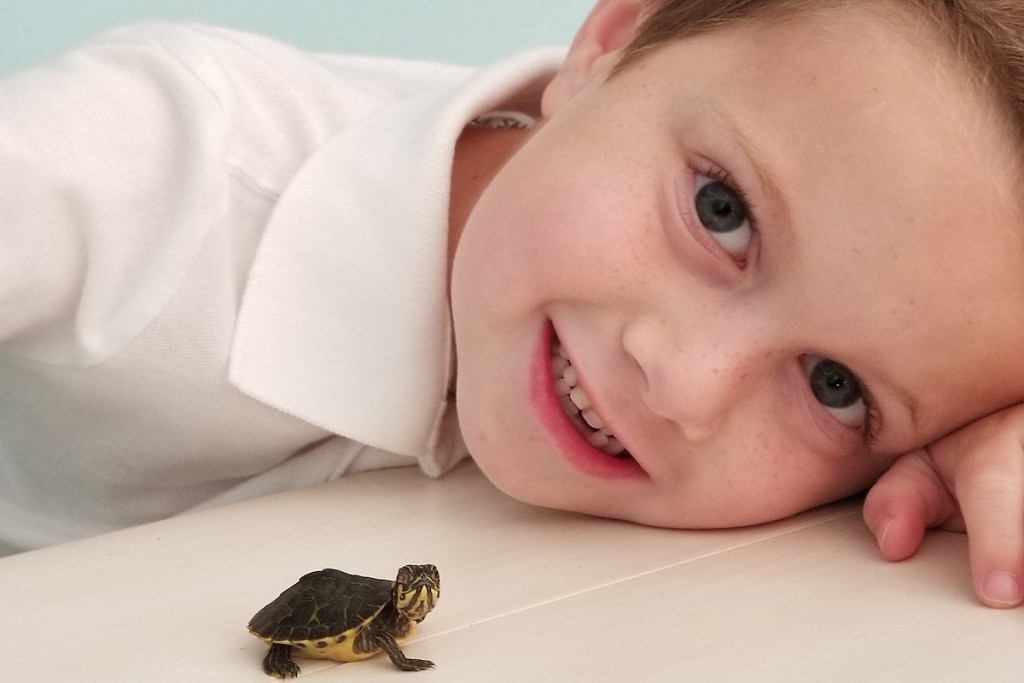
Find a space for your baby turtle
When buying a new turtle, your first key decision is whether to get a terrestrial animal or an aquatic one. They require slightly different habitats, but both will need access to water and land, which means you will fully equip your terrarium for them to enjoy both environments. Before you even bring your new pet home, you need to have his home ready.
Turtles like space, so find a large designated area in your home. Even small turtles get bigger — be sure the new housing provides enough room for the turtle when he grows up. You may also decide to use a starter habitat and upgrade as he gets older.
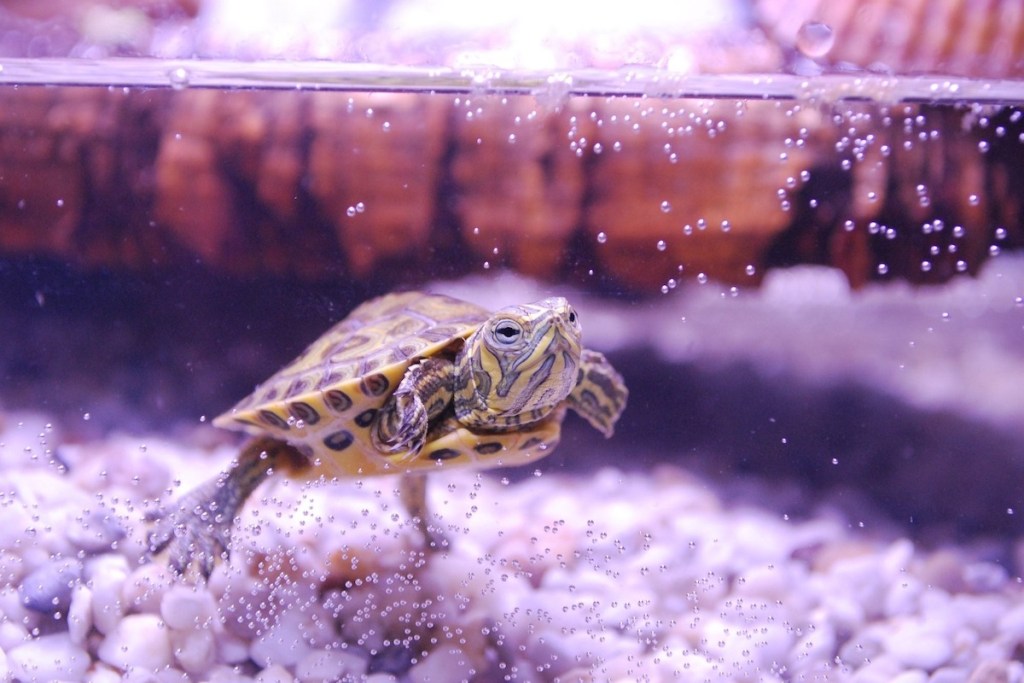
Set up his habitat
When designing baby turtle habitats, it’s important to get the setup just right. You’ll need the correct temperature, water-to-land ratio, and proper basking areas all in one medium-sized tank.
Step 1: Get the right tank! Don’t use a fishbowl, too-small housing, or any tank without a lid. Your turtle needs at least 20 gallons or much larger if you don't intend to upgrade in the future.
Step 2: Fill up with water, but not too much water. Plan to have at least 50% land (for a terrestrial turtle) or a large basking area (for an aquatic turtle) when your pet is fully grown.
For a hatchling, the depth of the water must be greater than the width of his shell, but not so deep that the turtle has trouble getting out. You can measure this with a ruler in advance, but you should be able to see if he's having an easy time swimming around. Install a ramp if it looks like your little guy is struggling to get in and out.
Step 3: Once you have the water situation set, you get to the fun part: decorating your turtle’s new home. Add a mix of rocks, plants, and structures to your design for him to explore. Think about where you will leave extra food, like plants, for him to nibble on during the day and keep it away from the water.
Step 4: Turn up the heat. Turtles need to stay warm, and you will have to install a heating lamp in the enclosure to keep the temperature around 85 degrees Fahrenheit. Situate the basking rock so it gets direct "sunlight" and put a cave at the other end for him to have a cooldown.
Step 5: Lastly, keep the tank clean. Invest in a filtration system and poop scoop but still do a partial water change every couple of days. You want to deep clean his tank about once per month, so set aside those tools for later.
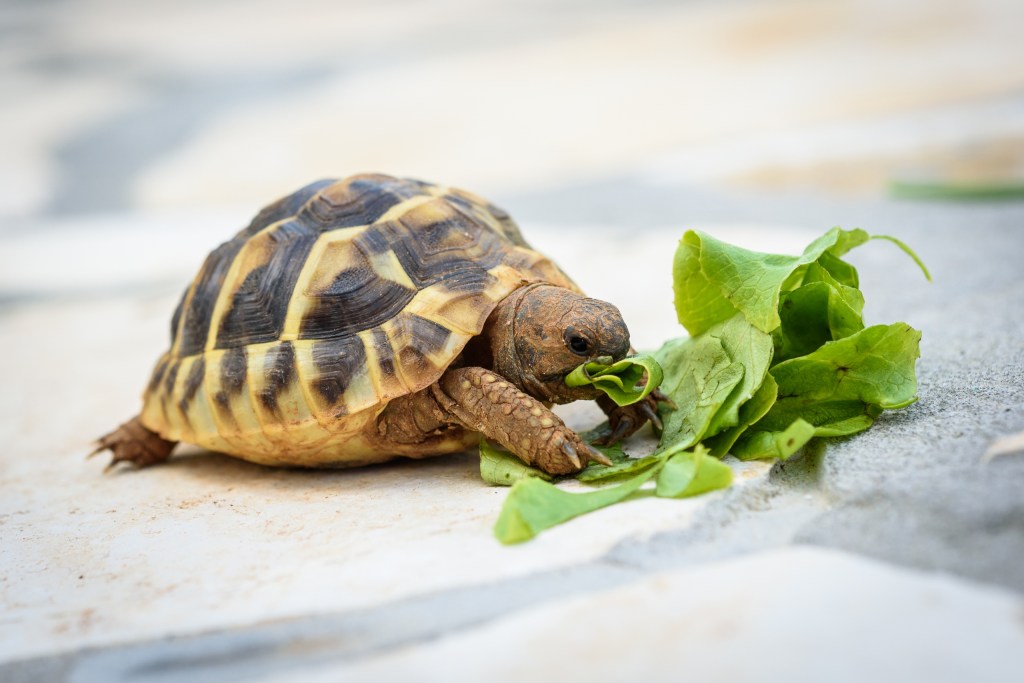
Feed your turtle on a schedule
Feeding your turtle can be one of the most fun parts of interacting with him on a daily basis. In the wild, turtles eat a diet of worms, snails, and plants along with a few other things they might find around their waterholes. Food from the pet store will keep his diet balanced and is designed to mimic the vitamins and nutrients he would seek out if he were free to roam.
Step 1: Invest in a feeding tank. While not strictly necessary, it can cut down on the mess substantially. Instead of painstakingly pulling out bits of lettuce, you just dump the water or extra substrate when he's done.
Step 2: Feed every day. Baby turtles need a daily meal, but you may taper that as he gets older. An older turtle might only eat every three days.
Step 3: Try a live feeding. Even though you might not enjoy watching it, turtles like to catch their food. Give him the opportunity to try it out as a baby by feeding him live prey and see if he takes to it. For a terrestrial reptile, this means crickets or worms on land, and for an aquatic species, it's fish in the water.
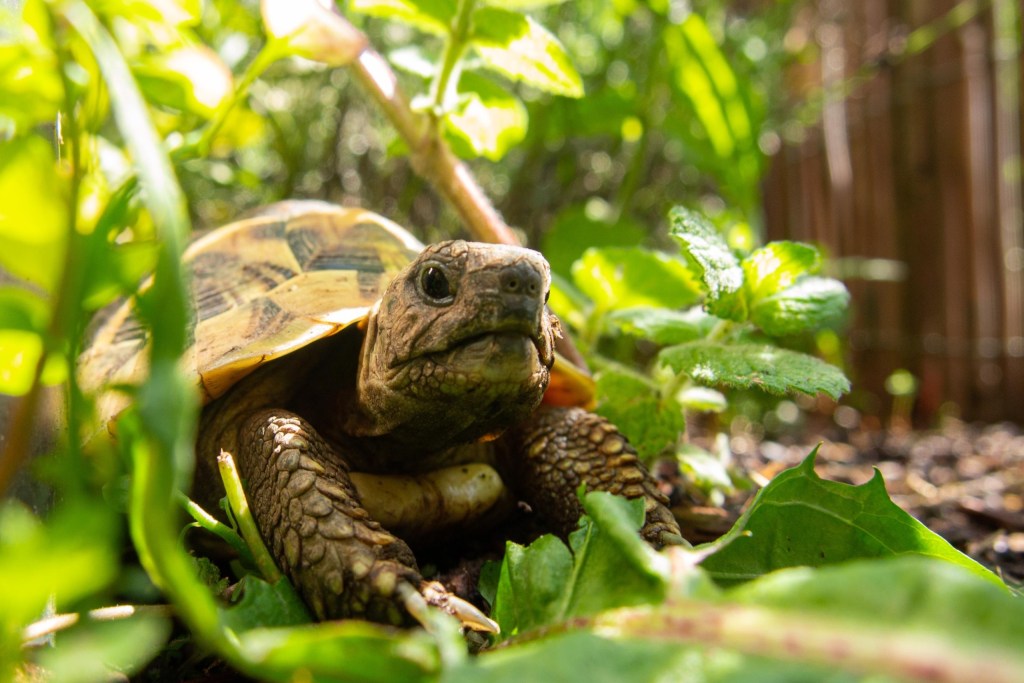
Keep him engaged
Turtles don’t like to be handled much and can carry diseases that are bad for humans. Properly wash your hands whenever you come into contact with him. In addition to playing at mealtimes, your turtle may enjoy exploring the outside world. Be mindful of predators and escape routes, and take him out (weather permitting) to walk around in the yard and bask in the sunshine. Inside his home, he'll play with toys like shells or plants and will enjoy digging in the gravel.
We all know turtles famously live a long time. When you bring home a baby turtle, you're signing up to take care of him for possibly 40 to 50 years. Ensure you know who will take him when your kid moves out or moves on from caring for him. With the right plan in place, though, you’ll have a fun and not too demanding pet for your home for years to come.
Editors' Recommendations
- 7 telltale signs of a dying hamster (and what you should do)
- Wondering what to feed a baby bird? Here’s how to take care of an orphaned bird
- Can you make a profit breeding your bearded dragon?
- 3 reasons not to give pet rabbits, baby chicks, or ducks this Easter
- Bunny care 101: If Easter inspires you to adopt a rabbit, read this first




